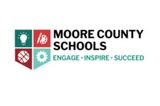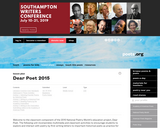
A series of worksheets, projects, lessons and activities on characterization for various student levels.
- Subject:
- English Language Arts
- Material Type:
- Lesson
- Provider:
- E Reading Worksheets
- Author:
- E Reading Worksheets
- Date Added:
- 02/26/2019

A series of worksheets, projects, lessons and activities on characterization for various student levels.

In this CCSS lesson, students will explore this history through text dependent questions, academic vocabulary, and writing assignments.

A short video on choosing the correct dictionary for each student's needs.

In this lesson, students compare and contrast two versions of the same fairy tale. Students use a Venn diagram to graphically illustrate the similarities and differences in the two stories.

A quick go to resource to help support citations when writing. Also encourages student developemnt of finding key points within informational text.

Common Lit is a searchable collection of free fiction and nonfiction texts searchable by thematic connection, subject, discussion questions or text. Please note in order to access the entire site you will need to create a free account.

Students will build and launch Magnus Effect gliders and measure the distance they fly. They will analyze the data to judge which material gives the glider the most distance. Then they may do the same process for other variables.

This curriculum guide covers six works of Laurie Halse Anderson (Chains, Forge, Ashes, Fever 1793, Independent Dames: What You Never Knew About the Women and Girls of the American Revolution, and Thank You, Sarah: The Woman Who Saved Thanksgiving), and contains discussion prompts, key vocabulary terms, and ideas for assignments and activities related to each book.

The following unit incorporates multimedia and classroom activities to encourage students to explore and interact with poetry by first writing letters to important historical poets as practice for writing letters to the Academy of American Poets Board of Chancellors, a group that represents poetry in America at its best.

E-book readers, or digital readers, are devices that can host thousands of electronic books and allows readers to interact with digital texts through the use of e-book tools and features. In this lesson, students will read e-books and use digital tools (dictionaries and notes) to support their development of vocabulary. Specifically, students will assume roles of “word detectives” as they look up words in digital dictionaries and use other strategies to identify the meaning of vocabulary words.

This interactive unit encourages students to evaluate the effect of the inclusion of figurative langauge in Amy Tan's nonfiction narrative essay Fish Cheeks paired with the poem Face It by Janet Wong. This lesson will assist students in understanding the power of language. Students will be compelled to write by the conclusion of this lesson.

Students will read the story, Tar Beach by Faith Ringgold and compare thier own lives with that of a girl in a tenement builidng in New York City. Through reading the story, students will better understand the hopes and dreams of the less fortunate.
Student will predict ideas or events that may take place in the text, give rationale for predictions, confirm and discuss predictions as the story progresses.

A guideline for teachers to compare the works of Edgar Allan Poe and Ambrose Bierce and discuss how their narration choices affect the piece and the reader.

A basic editing checklist for students to edit and improve their writing.

In this interactive lesson, students will learn the basics of editing.

This resource includes one poem, with an accompanying link to the poem being read aloud, and nine text-dependent questions (including one optional constructed-response prompt for students), and explanatory information for teachers regarding alignment to the CCSS.

This lesson capitalizes on a student's love of jokes to understand how word context and inference are used in everyday language to create humor.

In this graph project students will create a statistical question, gather, analyze, and graph data either by hand or using technology. The project includes a rubric to help students understand how the project will be assessed more clearly.

In this lesson, students select and research a real-life hero. They then prepare short lectures for their classmates based upon the research they gain from a variety of primary and secondary sources.

This webpage contains theme-based discussion prompts for each vignette in The House on Mango Street by Sandra Cisneros, as well as a selection of follow-up activities.